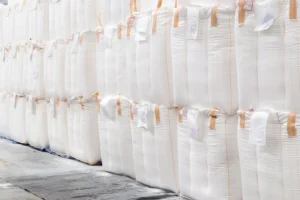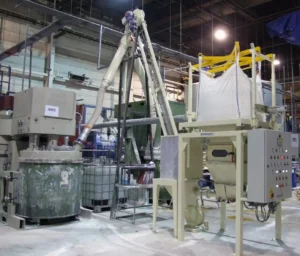What are the problems with aero mechanical conveyors? It’s completely understandable if this question is on your mind. There’s nothing inherently flawed with an aero mechanical conveyor (AMC) but issues can arise when the conveyors are used or set up incorrectly. Don’t worry! In this article we’ll run down how you can avoid headaches while using an aero mechanical conveyor.
What do we know? Here at Spiroflow, we’ve been in the dry bulk material handling industry for nearly five decades. It’s been our goal since our launch to provide quality custom designed conveyors to our customers and to make sure those conveyors work to the best of their capabilities. That starts with us understanding your needs.
What is an Aero Mechanical Conveyor?
Before I go any further, I want to explain how we define an aero mechanical conveyor and what it’s used for. An AMC’s purpose is to move material from point A to point B at a high rate. It utilizes a cable and disc assembly. It’s dust-free. The discs create an airstream that carries the material. Each pocket is made up of about 80% air and 20% material. This keeps the material from being dragged along the tube. This type of conveyor provides a total batch transfer.
Speeds & Capacities
The speed and capacity rates of an aero mechanical conveyor can vary depending on the size of the conveyor. For example, at Spiroflow, we design and manufacture AMCs in 3” (75mm), 4”(100mm), and a 5” (125mm) diameters. Speeds and capacities also vary depending on the material. AMCs don’t have variable conveying rates. See the chart below for an idea of how the AMC moves.
How to Avoid Aero Mechanical Conveyor Problems
The source of nearly every issue with aero mechanical conveyors is when the AMC isn’t used correctly.
Keeping the Proper Tension
The #1 thing customers do wrong with AMCs is operating them without proper tension on the cable. The cable is easily damaged if the tension is too tight or too loose. An auto-tensioning system will make your life much easier! Trust us on this one. Spiroflow developed a patented Dynamic Automatic Rope Tensioning system or DART for short. The rope/cable tends to stretch over time. The DART uses an air cylinder at one of the housings to maintain constant pressure. This keeps the tension on the sprocket and keeps the rope or cable on track. Overall, the DART saves you from manually having to check and adjust the tension and prevents equipment failure, which keeps your process moving.
Monitor the Sprockets
Problems can also be avoided if the operator regularly inspects the AMC’s sprockets. Placing a new cable on a worn sprocket defeats the purpose of a new cable. A worn sprocket will destroy a new cable very quickly.
Pay Attention to the Product
Although aero mechanical conveyors can run empty, running them while empty reduces the number of hours the conveyor or its components will last. It’s best to allow the conveyor to shut down and sit idle in between times when material is transferred.
Overfeeding can be a problem as well. Trying to max out the capacity of the AMC can put too much strain on the components. This also goes back to correctly sizing your conveyor for your application. An experienced supplier can ensure that the recommended conveyor is correctly sized to meet your required rate without overfeeding.
We strongly recommend material testing regardless of the product you plan to run. Utilizing a test lab early on will prevent problems in the future.
More Questions?
Give us a call or send us an email if you have any more questions. By the way, we don’t just design and build AMCs. You can check out our full line of products here. We also do control systems integration. More information on automation is here.




